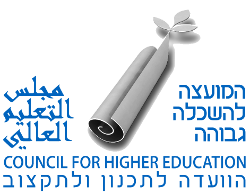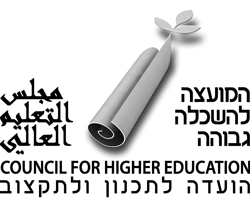Collection of Data for Start of Year 2021/2022
- In 2020-2021, the number of higher education students sharply increased by almost 24,000, most of whom attended attend bachelor’s degree studies.
- The number of high-tech students, including women, has continued to increase.
- Resources were allocated to the students’ assistance program in the amount of approximately NIS 0.5 billion a year, including a designated additional amount (NIS 100 million) for the COVID crisis.
- An additional NIS 70 million to facilitate digital teaching and develop technological tools and training techno-pedagogic teams.
- Experience-based learning – An investment of NIS 24 million in occupation-oriented academic courses for the years 2019-2022, and a one-time addition of NIS 30 million for 2022-2024.
- Launching the Quantum Project: NIS 1.2 billion, in collaboration with the Administration for the Development of Weapons and Technological Infrastructure, the Innovativeness Authority, the Ministry of Science and the Ministry of Finance.
- A total of 38,010 engineering students during the 2020-2021 academic year, the largest academic program in Israel (approximately 18% of bachelor’s degree students). Moreover, an additional 20,060 attended bachelor’s degrees studies (math, statistics and computer science). A total of approximately 58,070 technological degree students.
- The number of first-year nursing students doubled in the last decade – from 1000 to 2,200.
Minister of Education – Dr. Yifat Shasha-Biton:
I would like to congratulate the 350,000 students who will attend higher education studies this year.
As the system that prepares its graduates for the job market, academia strives to be attentive and relevant to the employment needs of the State of Israel, such that its alumni would be integrated in every field and support our national strength.
As someone who sees the minimization of gaps in Israeli society as a key objective, we will continue to improve academic access to all members of the population, while maintaining academic quality. This includes taking additional steps to establish the university in the Galilee region.
The academic system fosters that the best researchers and brings tremendous honor to the State of Israel. We will continue to strengthen the research field this year and foster new researchers.
Professor Yaffa Zilberschatz, the soon-to-be ex-chairwoman of the Planning and Budgeting Committee of the Council for Higher Education: “The past decade has been characterized by excellence and the massive growth of the academic system. The larger budget has enabled the system to develop and expand the accessibility programs and to open the gates of academia to all members of the society. Moreover, a significant increase has been observed in research investments, funds and infrastructures in general, and in flagship fields in particular: Data science and artificial intelligence, personalized medicine, science and technology, quantum physics and the humanities. Moreover, the number of academic publications has increased, and, thanks to the National Program for Strengthening High-tech Professions, many students have joined the system in those fields, and engineering studies have become the most sought-after academic program in Israel. The digital learning revolution that we have led has enabled the system to provide full academic teaching services during the COVID crisis. In addition, the system facilitates entrepreneurship and innovation studies and the expansion of collaborations between academia and industry.”
More women in academia
- Women constitutes 60% of the number of students. Viewed annually, this is a significant increase in the percentage of women (all degrees) – 58% of bachelor’s degrees, 64% of master’s degrees and 53% of PhDs.
- More women attend high-tech studies – in 2010-2021, the number of students who attended bachelor’s degree studies (computer science, including mathematics and statistics) was 2.6 larger – from 2,622 to 6,784 in 2020-2021, and the number of female engineering students grew by 40%: from 8,581 students in 2011-2012 to 12,008 female students in 2020-2021.
- The “Equator” Index for the facilitation of gender fairness was launched at institutions funded by the Planning and Budgeting Committee for the purpose of improving the representation of women in senior staff and the administration of higher education institutions.
Accessibility of higher education to diverse populations
- Access to higher education in peripheral regions: in 2020-2021, almost 58,000 students, who constitute approximately 30% of bachelor’s degree students, came from settlements that belong in lower socioeconomic clusters (Clusters 1-4). The part of students who live in those settlements is particularly notable at academic colleges that are funded by the Planning and Budgeting Committee, where they constituted 35% of bachelor’s degree students, similarly to their part of the population that lives in those clusters (36%).
- Access to higher education in the Arab sector: Some 58,000 Arab students, who constitute 17% of all students in Israel (they represent 21% of the population). This represents an increase of 122% since the beginning of the last decade.
- Excellence Program for Ethiopian students: An increase of 45% in the number of Ethiopian bachelor’s degree students in the last six years – from 2,608 in 2014-2015 to 3,782 in 2020-2021. Their percentage among students is 1.5%; the constitute 1.7% of the general population.
- More Haredi (ultraorthodox) students: Approximately 15,350 ultraorthodox students, an increase of approximately 2,000, constituting an increase by 15% in the number of students relative to 2019-2020 – 4.6% of all students in Israel, relative to 13% (their percentage of the population).
International higher education
- OECD rating: Israel is among the world’s leaders in terms of the number of higher education graduates and academic alumni among 25–64-year-olds.
- We continue to facilitate our international higher education standing: more international post-doc and advanced degree students.
Budget of the higher education system
- Substantial expansion of the higher education budget: from NIS 7.3 billion in 2011-2012 to NIS 12.5 million in 2021-2022.
- The research fund budget 2.4 is times greater – Annual research fund budgets are 2.4 times greater – from NIS 536 million to NIS 1,297 million.
- Substantial increase in the number of competitive research grants (biannual average) – from USD 157 million in 2011-2012 to USD 331 million in 2021-2022 (+90%).
- An increase of NIS 620 million (research infrastructure in the framework of the multi-annual program)


